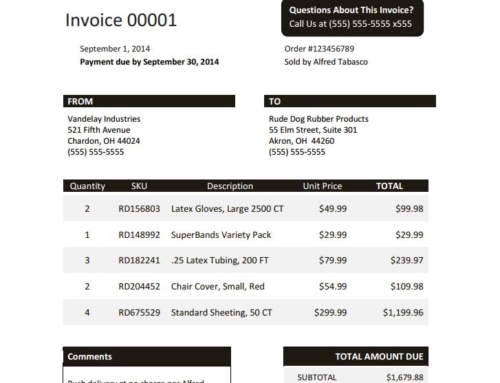Sageworks, a financial information company, recently conducted a financial statement analysis and found that of the many industries in which businesses operate, there are ten that typically have longer accounts receivable collection periods than others. Read below to learn which industries have historically high accounts receivable days and what exactly that means for businesses operating within them.
TEN INDUSTRIES WITH LONG AVERAGE COLLECTION PERIODS
Accounts receivable days= 125.1
Accounts receivable days= 110.9
Accounts receivable days= 109.3
Accounts receivable days= 104.4
Accounts receivable days= 99.0
Accounts receivable days= 90.8
Accounts receivable days= 74.4
Accounts receivable days= 70. 8
Accounts receivable days= 67.5
Accounts receivable days= 66.5
WHAT DOES THIS MEAN FOR THOSE INDUSTRIES?
Seeing such high accounts receivable numbers like those above can be quite shocking, but they are not necessarily the end of the world for businesses in those industries. Of course, every company wants to reduce accounts receivable collection days as much as possible, but there are other factors at play here such as business models and collection period industry averages.
For example, it could be pretty normal for average accounts receivable to reach 70 days in the construction industry. So if you’re right around that number, you’re in pretty good shape. If you’re much higher, then that could be a sign that you have a real invoice collection and cash flow problem.
BEST PRACTICES FOR REDUCING YOUR ACCOUNTS RECEIVABLE COLLECTION PERIOD
KNOW YOUR METRICS
The first step in evaluating your company’s AR performance is knowing where you stand. The formula for accounts receivable days is (Accounts Receivable / Revenue) x Number of Days In Year. There are many other accounts receivable metrics to measure and track, so never let this be the only indication of the health of your invoice collection process.
COMPARE YOUR METRICS
Once you know your accounts receivable days, it is essential to compare it to your peers and industry averages. If you’re right in line with your peers or lower, that’s good news. If you’re higher, then you know there is some work to be done to reduce your accounts receivable days.
MAKE A PLAN
Once you understand where you stand in comparison to your peers, it may be time to start making adjustments to improve your invoice collection strategy to reduce average accounts receivable days. You’d be surprised at how just a few simple changes can make a big impact. For example:
- Finding ways to get your invoices to customers faster, such as electronic invoicing instead of snail mail.
- Calling customers after invoice delivery to ensure they did receive it and if there are any problems that might delay payment.
- Sending monthly statements or payment reminder emails with invoice due dates.
- Using a business credit application template before extending credit to any customer




